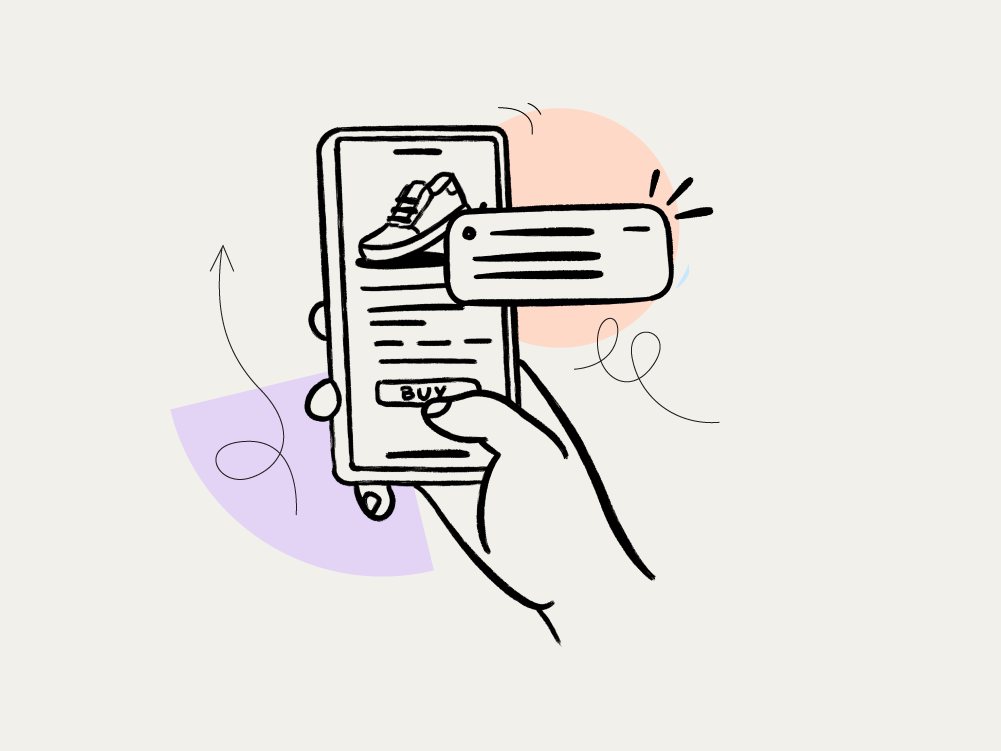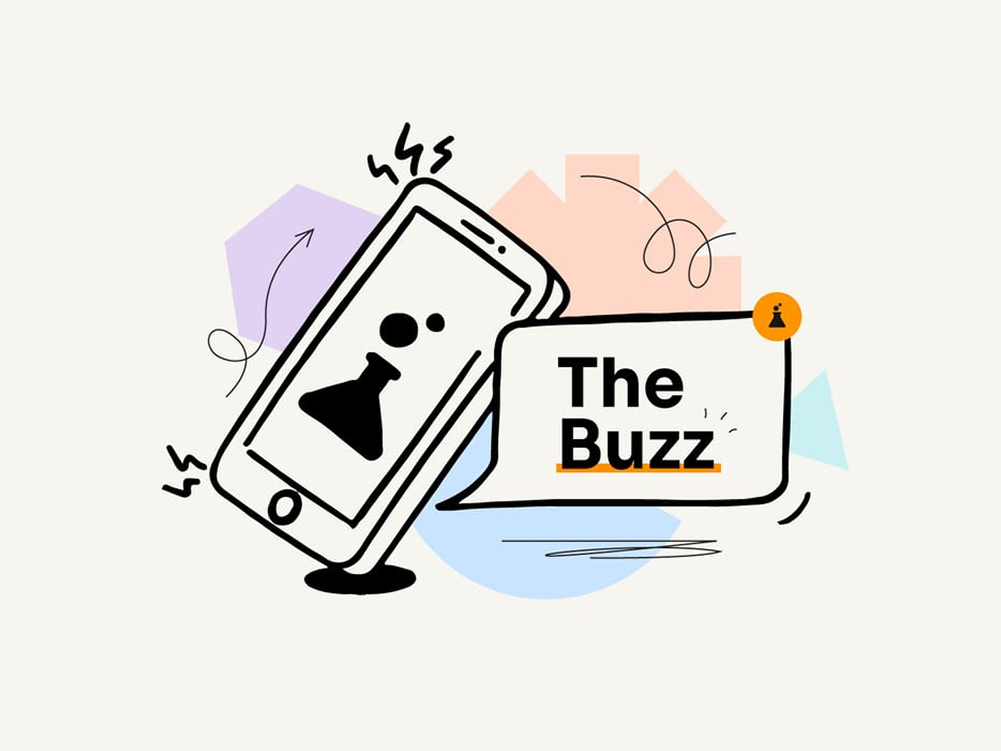Passion. Excitement. Fear.
Not necessarily in that order.
Building a brand is difficult. It’s stressful. It’s frustrating. And emotions often get in the way.
There’s so much to do and not enough time to do it. But you love it, and you hate it at the same time.
You’re doing what you’ve always wanted, but realising it’s harder than you ever thought.
Understanding the market, crafting an ICP, finding a supplier, finding another supplier, finding another supplier, testing a range of samples, refining the product, settling on pricing, naming the products, re-naming the products, going back to your original names for the products, writing a business plan, not being sure what you should include in the business plan, deciding just to wing it and let a higher power decide, posting on social media, getting excited about your first post getting a load of comments, realising they were all bots, getting your first traffic, getting your first customer, getting your first return, getting your first review, getting your first complaint…and so on and so forth.

Building a brand is difficult.
You can put in hours, days, weeks, months, years of worth, only to hit a plateau. That businesses you’ve dedicated all your time to won’t hit the next level.
And often that frustration leads to erratic, incorrect or desperate decisions, which makes growth only more confusing.
Many of the entrepreneurs we’ve worked with have come to us in a state of exasperation. Either from trying an agency that sold them false promises only to almost immediately let them down - or choosing it to go alone, but then getting overwhelmed by the number of ‘gurus’ all recommending a different strategy, methodology or (god forbid) hack would get them more sales than Amazon on Black Friday.
Now don’t get me wrong - growth is difficult. But it shouldn’t be confusing.
The reason growth is so complex for smaller brands is because there are so many options to try and you don’t yet know what works best.
It’s like opening a bag of revels for the first time.
You don’t know the shapes, the flavours or the even the variety on offer. It seems like a lucky dip.
Fantastic if you pull out a toffee. Terrible if you pull out an orange creme.

However, for the majority of Shopify SMEs, growth should actually be quite straightforward.
Now, at this point, I’m assuming you have a good product and a decent enough website. You’ve already made some sales and had some positive customer feedback, but you just can’t get new customers coming in or old customers to buy again.
Those are the two angles you need to focus on - and you just need one strategy for each.
Let’s start with new customers. You need something that:
- Puts your brand in front of your target audience
- Gives you enough creative freedom to grab their attention
- Gives you enough data to improve your strategy
So for SMEs, the best choice is Meta Ads - and I know some of you just let out an audible sigh.
“Wow! What a revolutionary thought.” I hear you exclaim. “I’ve tried meta ads and they were sh*t.”
Your results may have been sh*t, but that probably wasn’t the ad’s fault.
The ads need enough time to go through a learning phase where the behemoth within the algorithm learns what type of profile responds best to your ads.
Depending on ad spend, that learning phase is normally in the region of 5-7 days. So, if you were editing your ads every week, there’s a high chance you weren’t giving them enough time to breathe.
Secondly, as with anything, you need to test, learn, and adapt. It’s unlikely you’re going to strike gold on your first swing of the pick.
Here’s a handy guide to diagnosing your ad problems:

If you’re running ads yourself and still struggling, we can help with that.
If you’re using an agency or freelancer, make sure they’re being transparent with you. A good ads expert will consistently keep you in the loop about what they’re doing and why.
I’m not saying they need to email for every tiny update, but similar to the above, they should lay out what’s going well and where they need your help to improve.
And if the ads aren’t working, they shouldn’t encourage you to spend more.
If you’re spending at least £1,000, you should be able to get a 2-8x ROAS.
Again, at the start, you may just be breaking even, but as you learn, adapt, and improve, the results should get better.
If you’ve been spending £1,000s for over 3 months, still aren’t breaking even, and the agency turns around and says it’s because you’re not spending enough, then leave them and come to us.
Or don’t come to us. Just leave them. Please.
There are too many agencies promising ridiculous returns just to get a client through the door - only for that client to leave after 3 months having lost £1,000s.
And we always hear them pressuring the business into spending more and more.
“To make the car go further, you need to add more petrol”.
But the car isn’t even going forward. It’s reversing into a lamppost. You need to change the driver, not the fuel
So, now we’ve looked at getting new customers through, let’s look at how to get previous customers returning again and again.
Meta ads are still a good option, but you really want to be focused on building up your owned channels.
Owned channels are where you don’t have to pay to talk to your audience.
Meta is pay to play. If you want to get a message in front of your customers, you have to pay them to do that. Every single time. And if they suddenly mix up their algorithm to make it 10x more expensive, you’re at their whim.
You need to get your customers into owned channels as soon as possible.
Owned channels are things like email, SMS, and forums. Data that you own on platforms you’re in control of where it doesn’t cost you to communicate.
As soon as you have a steady stream of customers coming through, you need to keep yourself top of mind. You need to get as much from them as possible. Getting a new customer is far more difficult than retaining a current one, so that should be your focus.
Most companies use email, which is great. There’s nothing wrong with email at all. But it’s not the best.

The best owned channel for SMEs is a mobile app.
Why? Push notifications.
Push notifications are those messages that pop up on your lock screen or slide down from the top of your phone letting you know a sale’s just started on ASOS. Or Jenny from University just liked your latest LinkedIn post. Or your dad’s forwarded you a meme on WhatsApp.
Push notifications have a 16x greater click-through rate vs. email. Yowza.
So not only is it free to message your customers, but it’s far more likely they’ll read and act on your message.
We frequently send push notifications for our customers that results in £1,000s of sales.
The sooner you can stop paying to sell to your established customer base, the more sustainable your growth becomes.
And mobile apps aren’t just good for messaging.
- 85% of customer prefer using a mobile app over a mobile website
- They convert 3x better than mobile websites
- They also drive a 10% higher average order value
It’s not just easier for you to communicate with your customers, but it’s easier for them to shop.
Everyone wins.
So, let’s recap.
You need an effective, scaleable way to drive new customers. And the best option for that is Meta.
And then you need an owned channel to get more from your customer base as it grows. And the best option for that is a mobile app.

If you’ve been struggling for a while or really want to ensure you’re creating sustainable, effective growth, we offer an accelerator program that dives deeper into the smaller nuances to make sure no stone is left unturned.
With that, you work one on one with one of our Shopify growth experts who will take a look at your business from all angles to tell you what you’re doing well, where you can improve, and what to do next.
We operate it on a needs basis, so you can choose whether you want weekly calls or monthly check-ins. It’s all on your terms.
If you want to find out more, you can get in touch with us here.

Skyrocket your Shopify sales with a no-code Apple & Android mobile app. Available now on the Shopify app store.















.webp)
